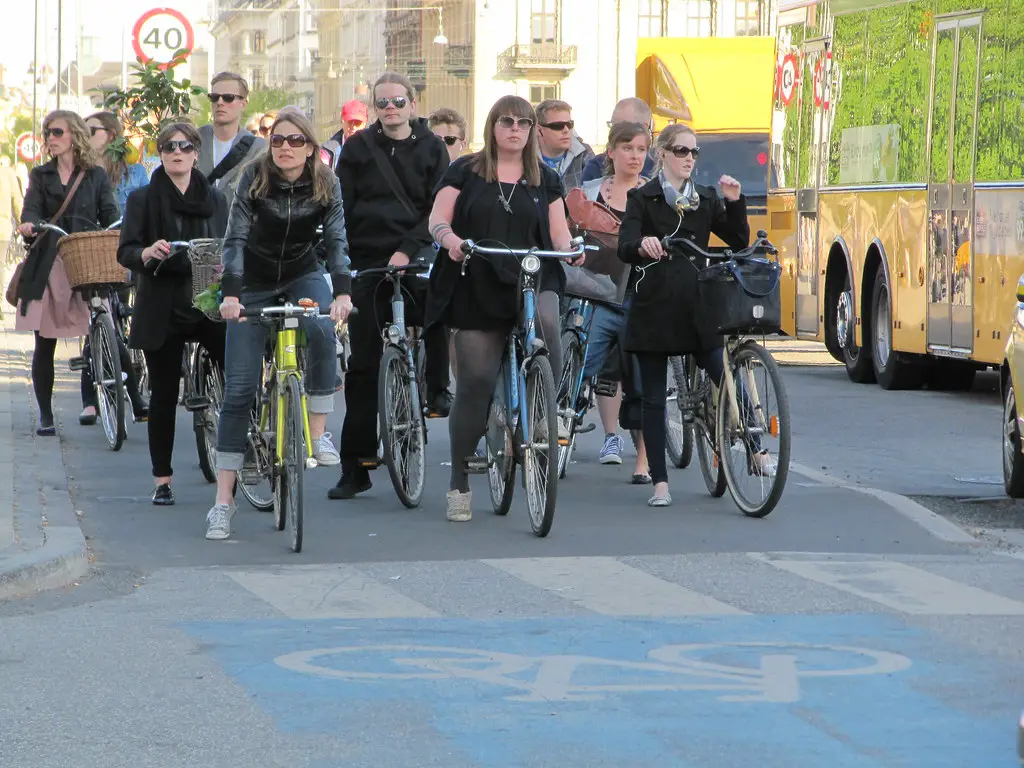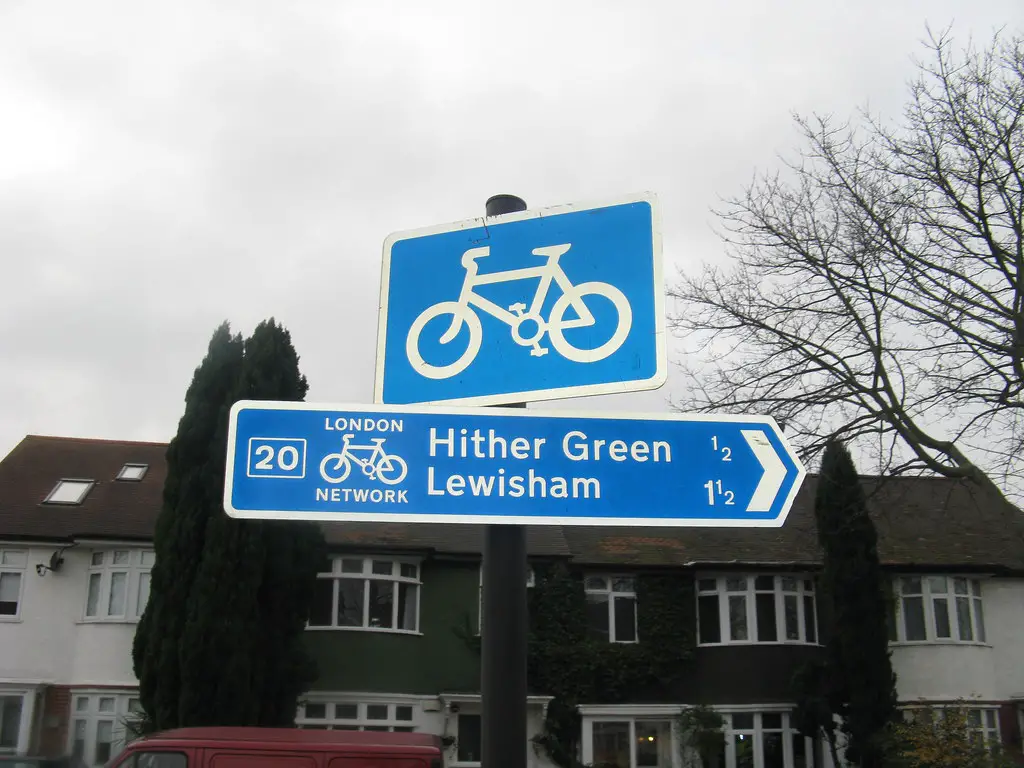Amsterdam’s most prominent international contribution to sustainable communities came in 1997 with the Treaty of Amsterdam – an amendment to the Treaty of the European Union – which called for ‘a harmonious, balanced and sustainable development of economic activities, a high level of employment and of social protection, equality between men and women, sustainable and non-inflationary growth, a high degree of competitiveness and convergence of economic performance, a high level of protection and improvement of the quality of the environment, the raising of the standard of living and quality of life, and economic and social cohesion’. A pretty thorough definition of sustainable communities if ever there was one!
Despite this, the Dutch capital is better known for its bicycle network than its input to the political agenda of Europe’s sustainable communities. Yet in a more tangible sense, Amsterdam’s bicycle network could be its biggest contributor to global sustainable communities, being an often-cited example of the positive effects of a dense urban bicycle network.
Connections between the city’s bicycle network and its sustainability are frequently made. Phrases like ‘one of Europe’s most sustainable cities’ are readily applied to Amsterdam, and research has attributed the city’s longer life expectancies, at least in part, to bicycle use.
Yet whilst the Dutch capital is now synonymous with urban bicycle use, this has not always been the case. The bicycle was introduced into the Netherlands in 1870, and apart from a dip during World War II as a result of rationing and massive bicycle theft by the occupying Germans, bicycle use remained high until the mid 1950s.
Around this time, automobile traffic began to rise as cars become increasingly affordable and desirable. This brought congestion to central Amsterdam’s narrow streets and suburbanisation to its edges, reducing bicycle use in the process. At this stage, the rise of the car in Amsterdam was little different to that of many other European and North American cities. However, when road traffic accidents reached an all time high in 1972, Amsterdam’s embrace of the automobile took a different trajectory. Fueled by public dissatisfaction, safety became a high profile political issue, and as pressure from the Dutch people persisted, the bicycle became a government priority for the first time. The resulting legislation to discourage car use alongside extensive national investment in bicycle networks saw levels of cycling increase dramatically.
After decades of hard work, Amsterdam now sees 85% of its residents riding their bike at least once a week, and has 450km of bike lanes – the majority of which were constructed after the political pressure seen in the 1970s.
Before the bicycle arrived in Amsterdam in the late 19th century, the city had undergone six centuries of urban development, inadvertently creating an ideal environment for bicycle use. As with most cities, Amsterdam has seen suburban growth, but its compact semi-circular city centre and surrounding inner suburbs remain well suited for cycling and bicycle networks. When I met Mark Minkjan of City Breaths and CITIES earlier in the year, he said ‘I think the size of a city is very important for bicycle use. Amsterdam is compact, and the same in Copenhagen.’ Whilst such an analysis is simple, it is also true – a smaller city is more navigable by bicycle purely because shorter trips are more likely. 85% of journeys by bicycle in Amsterdam are shorter than 5km (3.1 miles), for which the compact size of the city is inevitably a factor.
Amsterdam’s suitability for a bicycle network is about more than its compact size, however. A network of canals throughout the city centre and some 1,500 bridges spanning them mean Amsterdam is essentially a city of islands. Whilst water management was an underlying motivation, most of Amsterdam’s canals were in fact built to encourage property development, meaning a lot of inner city roads have water to one side and housing to the other. The result of this is that road widening is almost impossible. Amsterdam’s urban form is therefore not particularly suited to cars, hence the city’s congestion problems when automobile ownership began to increase. Considerations about how to adapt Amsterdam’s centre for cars were made in the 1960s, but were ultimately abandoned for policies which encouraged bicycle use. This included the development of an extensive network of segregated cycling facilities and bicycle friendly policies which essentially turned most of Amsterdam’s city centre roads into a bicycle network.
On its narrow roads, where segregated bike lanes do not exist, Amsterdam’s cyclists share space with other traffic. Integrating bicycle and automobile traffic can cause problems, but Amsterdam minimised this by turning many narrow roads in the city centre into ‘bicycle streets’ where bike users have absolute priority over the entire width of the street’. Cars are welcome, but are limited to speeds of 30 km/h (19mph), and must yield to cyclists. Strict liability, where car users are automatically considered at fault, unless they can prove otherwise, further encourages those in automobiles to give special consideration to cyclists.
Mixed-use developments typically found in Amsterdam have further enhanced the city’s suitability for bicycle use. With home, work, and leisure opportunities typically located within shorter distance of each other, residents have walkable and cyclable access to retail, leisure, health and education facilities, critical in establishing sustainable communities. Having more people on the street also increases safety and the opportunity for casual meetings. A cyclable city like Amsterdam not only makes it quicker and easier to access urban facilities, it facilitates friendship and networking, developing a sense of community in the process.
Whilst undertaking research in Amsterdam earlier this year, I heard numerous perceived positive repercussions including economic benefits, improved air quality, and equal opportunities, all of which were credited to the city’s bicycle network. An impressive accomplishment if true.
Marc van Woudenberg – founder of the Amsterdam cycling blog Amsterdamize – stated that ‘business is better in Amsterdam. Shopkeepers want to have more access for people on bikes and pedestrians, and whilst it means less amounts of shopping, it means more trips, more moments of shopping.’ However, not all shopkeepers appear to be embracing cyclist’s custom as eagerly as van Woudenberg suggests. In 2009, Detailhandel Nederland – the Dutch retail association – called for the better promotion of free car parking facilities available nearby in an attempt to boost business. In addition to this, whilst cycling has undergone a resurgence in Amsterdam since the mid 1970s, the amount of local shops has fallen in that time, from 7,347 in 1975 to 3,227 in 2010. If business really is better in Amsterdam as a result of its bicycle network, it’s not good enough to halt the decline of independent traders in the city centre.
Connections between cycling and improved air quality seem logical, due to the bicycle being a zero emission form of transport when in use. However, road traffic in Amsterdam remains the biggest contributor to air pollution, despite a modal share that many cities would be envious of. Regardless, the Dutch government remain confident that bicycle network investments can improve air quality, with environmental legislation in the mid-1990s emphasising ‘a preference for public transport and bicycles’. Although encouraging bicycle use has benefits when attempting to improve urban air quality, it cannot provide the solution independently. Factors such as local geography, climate, and industrial activity are major contributors that would be foolish to ignore.
Though air quality considerations are complex, the ability of Amsterdam’s bicycle network to increase access to local services is clearer. The city has a comprehensive, web-like infrastructure of bicycle lanes or roads in which cyclists have legal priority over cars. As well as this, Amsterdam has extensive signage and traffic lights exclusively for bicycles. In terms of implementing bicycle-friendly roads that make it easy for citizens to access urban services, Amsterdam’s bicycle network is hard to criticise. The only major omission is that north and south Amsterdam aren’t connected for cyclists, though with a harbour dividing these regions, this is forgivable. Similarly, the absence of the city-wide cycle hire schemes so popular in cities of late is justified by high levels of bicycle ownership and prevalence of independent cycle hire merchants in the city.
Whilst cycling remains a distinctively male experience in the UK and USA, the Netherlands has succeeded in getting a broader portion of its citizens cycling. A 2008 study by Pucher and Buehler found that 55% of all trips by bicycle are made by women, and those aged over 65 make 24% of their trips on bike. Yet despite the city’s bicycle friendly form, some of Amsterdam’s residents remain unenthused. Bicycle use remains low among ethnic minorities, potentially due to a lack of cycling traditions. Similarly, lower income groups cycle less in Amsterdam, suggesting that, even in one of the world’s most bicycle friendly cities, the car remains a valuable status symbol.
Public transportation challenges are the norm in today’s cities, partly as a result of population growth and inadequate investment. At the same time, pressure to make our cities more sustainable is significant. Bicycle networks are therefore an understandably enticing opportunity. What could be better than getting citizens off crowded, predominantly loss making and polluting transport options and onto vehicles they maintain that take up hardly any space? But urban bicycle networks and bicycles themselves do not provide the answer to every modern urban dilemma. Economic challenges, struggles with air quality, and portions of society who do not engage in bicycle use in Amsterdam, despite its impressive bicycle network, demonstrate this.
But the city’s achievements should not be forgotten. Amsterdam has some of the world’s highest levels of cycling, and a bicycle network that is the envy of cities all over the world (apart from, maybe, Copenhagen. You lucky Danes). Whilst challenges remain that Amsterdam’s bicycle network cannot address, the city has seen a lot of cycling success, though once again, this cannot be attributed entirely to its physical bicycle network. A legal system which prioritises cyclists on the city’s roads is an integral ingredient, and just as importantly, if not more so, is an incredible enthusiasm from Amsterdam’s citizens for the bicycle as a mode of transport.
Photo: liber


